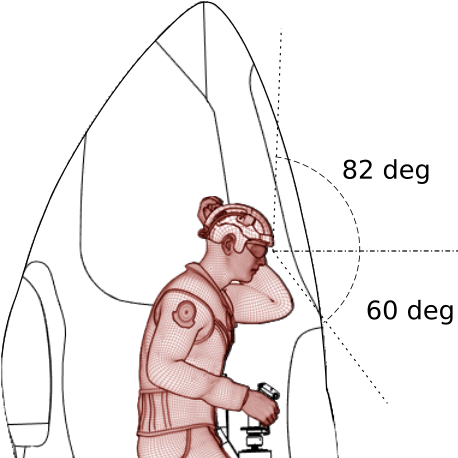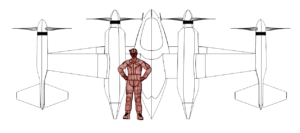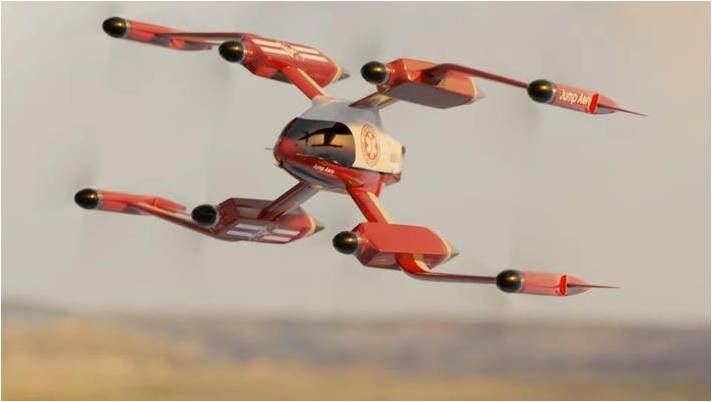Jump to the Rescue
The State of Oregon might be ready to Jump into serving remote areas with a startling type of drop-in emergency vehicle. Jump Aero’s Pulse eight-motor biplane configuration could whisk emergency medical technicians on a flight to patients who could otherwise wait for a half-hour or more before help could arrive.
Joshua Kupietzky, writing in Simple Flying, cites five characteristics of the craft that merit attention. “Quick arrival times… Serving a special niche… Battery-powered life-saving impact… Vertical takeoff… Easy to use and maintain.” These features describe many eVTOLs (electric Vertical Take Off and Landing) aircraft, but the Pulse allows landing in the space that would otherwise be taken up by an ambulance or small fire vehicle.
Carrying a trained professional EMT or firefighter to the scene along with an array of emergency gear, Pulse can have said professional giving medical care or putting out fires within minutes of setting down.

Pulse’s strategically-place window enable pilot’s visibility in all flight positions.
Because it’s a tail-sitter, the pilot enters standing up, lifts off in about 60 seconds, rises vertically, then pivots into a prone position. Ergonomically-located windows allow forward and downward vision from all flight positions. On landing, the pilot is once again standing up. This is similar to Mark Moore’s Puffin, a NASA design from over a decade ago, but with six more motors.
Its configuration means that Pulse needs no landing gear, and its flight path eliminates the need for pivoting motors. Simplification extends to the flight controls, which include “an adaptive flight controller,” presumably to lighten the pilot’s workload and enable him or her to focus on the mission. To further protect the professional inside, Pulse features a full-airframe parachute. To enhance its range and time to scene, it can be transported on a flat-bed trailer to a position near its intended use.

Jump Pulse with pilot, who enters craft standing up, and then pivots to prone position in horizontal flight
The craft’s eight cross-linkable 11-kilowatt-hour batteries enable speed dashes of up to 250 knots (287 mph) and hovering at up to 9,500 feet – even with “a failed propulsor.”It can maintain hover even in 20 knot (23 mph) winds from any direction. Pulse can land on slopes up to 10 degrees, including most roads and driveways, according to the maker.
What the State of Oregon Wants
Kenji Sugahara, the director of the Oregon Department of Aviation explained a dramatic move by the State following the signing of a Memorandum of Understanding for up to 126 Pulses. “We look forward to building a long-term relationship with Jump Aero as we explore providing rapid first response to our rural communities with the JA1 Pulse. We are excited to be bringing cutting edge solutions to Oregon residents which will positively impact their health and lives in such a dramatic way.”
Carl Dietrich, president and CEO of Jump Aero, added, “We are confident that the JA1 Pulse will be a critical lifesaving tool in Oregon and look forward to working with first responders there and in the growing list of partner regions.”
A State with Challenges
Living in Oregon and exploring its southern and eastern terrain, your editor understands the need to have dispersed resources that can be brought to remote locations quickly. Many mountainous areas have twisting roads and narrow byways that prevent ground-bound emergency vehicles from reaching a destination in anything other than a sluggish fashion. Pulse’s high speed and direct routing could bring care within the eight-minute window recommended as essential by health care workers.
It would also make ready access to wildfire scenes available to rural communities. Wildfires have literally wiped out small towns such as Paradise and Weed in California and Talent and Phoenix in Oregon. Overhead surveillance from long-range drones could spot incipient fires, and quick response vehicles such as the Pulse could stop them before they turn deadly. Albion Bowers, retired Chief Scientist at NASA Armstrong Flight Research Center at Edwards Air Force Base, floated the idea of Predator drones patrolling the forests and high plains over a decade ago at an Experimental Soaring Association Workshop at Tehachapi, California. Now, with rapid response craft such as the Pulse, we have the opportunity to save forests and even entire towns.

Aftermath of Talent, Oregon fire which destroyed a large portion of the small town
Much More Information
Carl Dietrich, who was also one of the designers of the Terrafugia roadable airplane, goes into considerable detail to explain the mission and technology behind the Pulse.
The potential for saving lives and property are enhanced with new aircraft and their attendant technologies. We hope to see these innovations brought to the fore in coming months.

